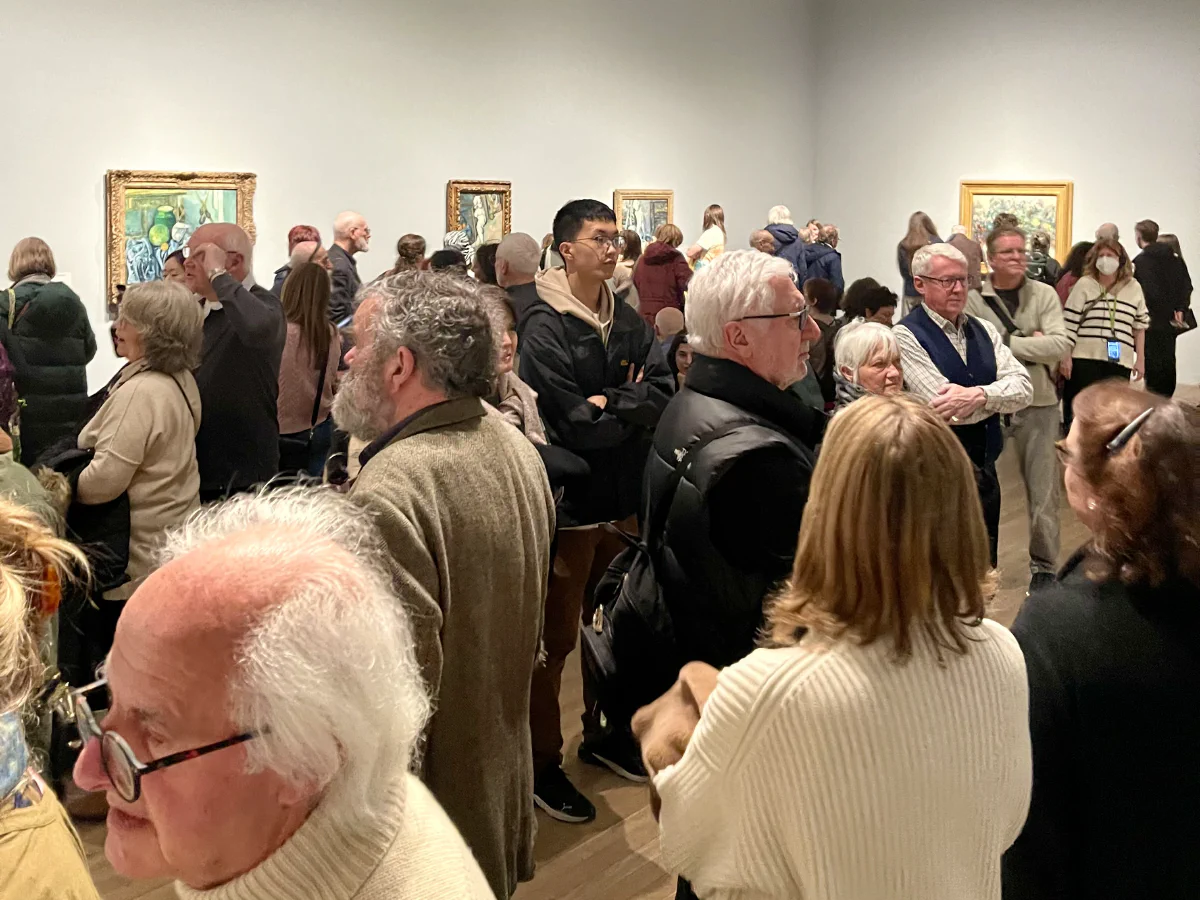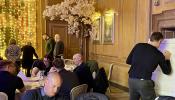Align OKRs with a Gallery Walk

After running an initial OKR setting session, but before teams start checking in, it’s important to refine & align those early OKRs.
An OKR Gallery Walk is a variation on the OKR Festival, and one of my favourite ways to align OKRs after the initial drafting workshops.
Combining elements of a traditional Gallery Walk and a more structured “Shift & Share” I run these in a speedy, informal variation and a slower more structured variation depending on the audience and the time available.
The informal version
In person
- Print posters and hang around the room
- Invite people to wander around and see them all
- Ask them to stop in front of the one that makes them most excited (happy, confused, enraged, etc.)
- Find the poster with the largest group and ask the people in front of it why they’re there
- Move on to the next largest group and repeat
Online (works asynchronously, too)
- Add draft OKRs to a shared doc, slides, whiteboard, etc.
- Give people time to read them all
- Participants dot-vote on the ones they find most exciting
- Find the OKRs with the most dots, ask why folks voted to discuss this one
- After a few minutes move on to the one with the next most dots
- Tip: Use chatterfall to start the conversation
The more formal version
In person
- Each team creates an OKR poster
- Each team nominates a “host”
- Place posters & hosts around the room
- Hosts listen but don’t present
- Everyone else is a “critic”
- Randomly distribute critics at each poster
- Critics spend 1-2 minutes reading the OKRs
- Critics spend ~8 minutes discussing the OKRs
- Host listens & takes notes
- After 5-10 minutes, Critics rotate to the next poster
- Repeat the above until critics have seen all posters
- Teams regroup & make adjustments based on feedback (while it’s fresh!)
- Debrief altogether: How was that? Any patterns? (5min)
Online
- Teams add draft OKRs to a shared doc, slides, whiteboard, etc.
- Create breakout rooms for each team’s OKRs
- Nominate a “host” for each team to stay in that room
- Distribute “critics” evenly into each room
- Critics read OKRs for 1-2 min
- Critics discuss for ~8 min
- Critics switch rooms (ensure a host from that team remains in the room)
- Repeat until time runs out or all critics have seen all OKRs
- Teams join their own rooms to make adjustments (10 min)
- Debrief altogether: How was that? Any patterns? (5min)
Tips & variations
- Play music (at low volume) to enhance the party/conversation vibe
- Bring wine & cheese to enhance the art-opening vibe! 😉
- Use the hands up for silence technique to rapidly bring the group back to focus when it’s time to switch groups
- Teams can rotate who plays “host” to give everyone a chance to see other team’s OKRs
- Hosts may rotate with others on their team so they can also be critics
- Feeling bold? Let critics make notes directly on the posters
- Adjust the timing as needed to accommodate the length of your session
- Do this as often as you can—all feedback is good!
Questions for discussion
Here are some questions critics can ask each other. You can even print these as well and put them around the room as reminders.
- Are the OKRs clear on their own without lots of explanation?
- Are key results truly measurable?
- Do key results have numerical targets?
- Do key results have baselines where possible?
- Are the objectives inspiring and concrete?
- Can anything be made more concise?
- What dependencies or issues do you see?
- Are they “stretchy” but not impossible?
A more detailed description
Preparation
Before the event, get each team to transfer their OKRs from their drafting board and into a shared document, perhaps using this OKR sharing template.
This creates a bit more structure and forces teams to make a few more adjustments and choices to the wording and targets, what makes the cut: what’s actually an objective, key result, health metric, or activity worthy of their attention in this cycle.
Print these “posters” in the biggest format possible with the largest type you can manage. Remember, we’re turning these into works of art worthy of display in a gallery. Also, it’s useful if participants can read them from several feet away and make a decision about whether to approach and read more. I recommend at least A3 but A4 will work in a pinch.
You can also invite teams to get creative and design their own poster to show off their draft OKRs. Teams may decide to include health metrics, dependencies, activities and/or other info but the focus should be on the OKRs.
Hang them up on the walls of a large room with plenty of space to move around and gather in front of them.
Invite as many colleagues as you can, certainly the members of each team but you can invite others as well. Participants don’t have to have OKRs displayed in order to offer valuable feedback! Everyone can be a critic.
The informal version
Invite participants to wander around the room and take a look at each poster, stopping to chat with others along the way. Online this can mean letting people hop in and out of breakout rooms as they like.
When everyone has had a chance to look briefly at all the posters, ask them to go and stand in front of the one which they find most “stimulating”. Perhaps it makes them excited, giddy, anxious, furious. Whatever emotions it elicits, tell them to go stand by it. They’re “voting with their feet”. When doing this online, use dot-voting to identify the most interesting OKR sets
Look around the room. Starting with the largest cluster of people, ask them why they’ve paused here. What are they responding to? How have they interpreted this poster? What does it mean to them?
After a few minutes, move on to the next largest group, and so on until the feedback starts to feel repetitive or you run out of time.
Give poster owners a few minutes to capture any notes at the end. You can also invite reflections from the groups. What common issues or strengths did they see? What questions came up repeatedly? What was missing? What was unnecessary?
This version focuses conversation on the most controversial/interesting sets of OKRs and doesn’t necessarily give feedback to every team. The upside is it’s quick and easy to run and gets people up and moving around.
The more structured version
In this version, identify a team host or “listener” from each team to stand next to their poster. Their job is NOT to present or explain their OKRs but simply to be present and listen to the discussion as each group comes through. Split the remaining participants into as many groups as there are posters. Randomise groups across teams to create the most diverse conversations possible.
Decide how long to spend on the exercise, subtract 10 minutes for a debrief at the end and divide the remaining time by the number of posters.
Critics move around the room every 10 minutes. They spend the first 1-2 minutes reading the OKRs. They can ask clarifying questions to the host but the host should NOT present the OKRs. The OKRs need to be written in a way that they can stand on their own. Critics should mostly discuss what is written on the page, not what the host has told them.
After about 10 minutes of dicsussion, critics rotate to another poster (or breakout room if online). Repeat the process until hosts have heard feedback multiple times and critics have seen all (or most) of the OKR posters.
Hosts may decide to swap with another member of their team so everyone can be a critic.
After the critics have seen all the posters, give the teams time to regroup and make any adjustments to their OKRs while the feedback is fresh.
Finally, do a short debrief of the experience with all the participants to find out if there were any patterns or feedback that will benefit the whole group.
Do it early and often!
OKR gallery walk sessions like this can be run anytime to test out draft OKRs. I sometimes include quick informal ones in the middle of an OKR-drafting session, a week later, or even after teams have started checking in.
It’s a fun, easy way to provide feedback and every session will help teams improve their OKRs.



